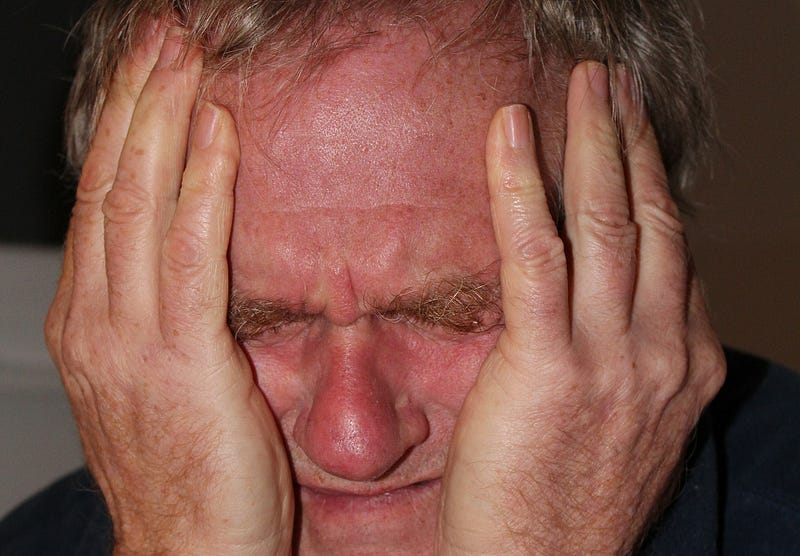Strategies for Overcoming Bad Habits: Insights and Solutions
Written on
Understanding the Challenge of Bad Habits
What are your guilty pleasures — late-night snacking or compulsive phone use? Interestingly, while bad habits can be incredibly hard to shake, it often feels like good habits take an eternity to become ingrained. Let’s delve into why this is the case and explore effective strategies for change.

Image by Gerd Altmann from Pixabay
It's common to feel embarrassed about certain behaviors. Perhaps that extra glass of wine or chocolate bar feels unnecessary, or you’ve spent countless hours binge-watching TV. Maybe you even find yourself nervously chewing your nails or fiddling with your hair.
However, it's essential to remember that everyone has their own set of bad habits. Engaging in actions we wish to avoid is a universal experience. Instead of starting from a place of shame, a more productive approach is to seek understanding. So, what exactly are bad habits?
The Mechanism Behind Habits Habits stem from a basic cognitive process in your brain aimed at promoting efficiency. When you react to a specific trigger, you tend to repeat that response if it brings you satisfaction. The more often you engage in that behavior, the less conscious effort it requires, leading to a more automatic response in the future.
Yet, this mechanism can lead to complications. While habits are intended to streamline our actions, they often make adopting negative behaviors much easier — and less mindful. For instance, you might grab a cookie every time you switch on the kettle, or scroll through your phone first thing in the morning. This is precisely why breaking free from bad habits can feel so challenging.
What Triggers Bad Habits? The cycle of habit formation — cue, routine, and reward — is universal. However, research indicates that negative emotions can significantly increase your susceptibility to falling into this cycle. Often, these emotions act as triggers for habitual responses. For example, many people eat more when they feel bored or fatigued. Stress may lead individuals to drink more or smoke, while procrastination often arises from a dislike for a particular task.
Becoming aware of the emotional triggers behind your repetitive actions is a crucial first step in overcoming unwanted habits.
Recognizing Your Triggers When you find yourself reaching for that extra cookie or lighting up a cigarette, try to reflect on the motivations behind your actions. Ask yourself:
- What triggers this response?
- Are you feeling tired and seeking energy?
- Is the task at hand causing you stress?
- Are you turning to that glass of wine because you're anxious about tomorrow?
As discussed, our physical and emotional states greatly influence our behaviors and our ability to manage them effectively. Unfortunately, habits tied to emotional triggers are often the most challenging to alter. However, by recognizing signs of exhaustion, boredom, or stress, you can intervene before the habit cycle begins.
Improving your sleep may help curb overeating, while meditation could alleviate stress, reducing your urge to smoke or drink. Engaging in enjoyable tasks can also help minimize procrastination.
Replacing Bad Habits Rather Than Eliminating Them It's vital to remember that breaking a bad habit often works best when you replace it rather than simply trying to eliminate it. If those unhealthy behaviors continue to linger, consider a different approach.
For instance, think about what you typically do during a two-minute wait for the kettle to boil. Many of us might mindlessly grab a cookie. Instead, consider using that time for a brief workout, tidying up, or reflecting on something you’re grateful for.
The key takeaway here is that when a negative behavior becomes associated with a trigger — like cookies with the kettle — it can be incredibly challenging to stop. A more effective strategy is to alter the response within the habit loop. Retain the cue (the kettle), but replace the reaction (the cookie) with something healthier.
The Role of Awareness in Breaking Bad Habits Becoming aware of your undesirable habits is the first step toward gaining control over them. This involves recognizing the emotional triggers that fuel these behaviors and understanding how you can modify your habitual responses.
Awareness is the foundation for change. Once you shine a light on these patterns, you’ll find it easier to overcome negative behaviors.
How to Effectively Break Bad Habits: Action Steps 1. Identify the habits you consider harmful. This isn’t as trivial as it may seem. 2. Avoid the trap of thinking that what’s detrimental for others is also harmful to you. 3. Reflect on your vulnerable moments. When do you feel most tempted? Is it when the kettle is boiling? During times of stress or fatigue? 4. Implement a healthy substitute for your bad habits. Remember, negative behaviors can be replaced, and bad reactions don’t have to persist!
Let’s engage in a conversation: what bad habits have you struggled to break? Share your experiences, and together we can explore ways to eliminate them.
Hi, I’m Scotty. With nearly 30 years of experience in leadership roles within HR and IT, I have a passion for writing about management styles, leadership techniques, values, and other topics that intrigue me.
To receive my stories in your feed, I’d love for you to follow me. If you enjoy my articles and want to have them sent directly to you, please subscribe to my newsletter.
Chapter 1: The Science of Bad Habits
The first video, "Why is it so hard to break a bad habit?" delves into the psychological aspects of habit formation and offers insights into the challenges of overcoming negative behaviors.
Chapter 2: Insights from Neuroscience
The second video, "Neuroscientist explains why bad habits are hard to break," provides a scientific perspective on the neurological underpinnings of bad habits and effective strategies for change.